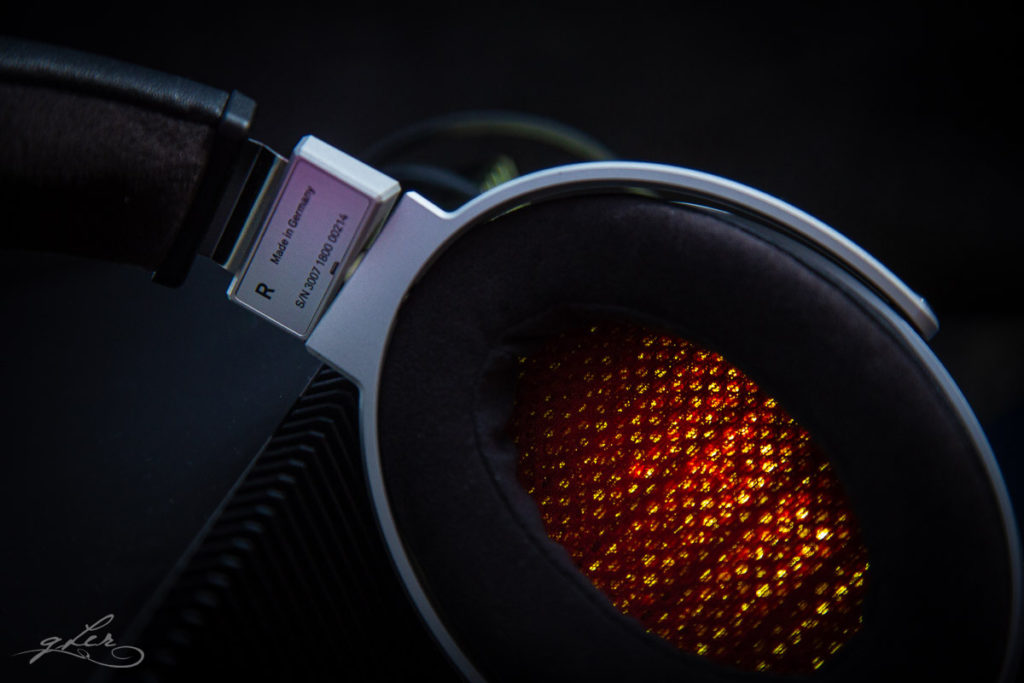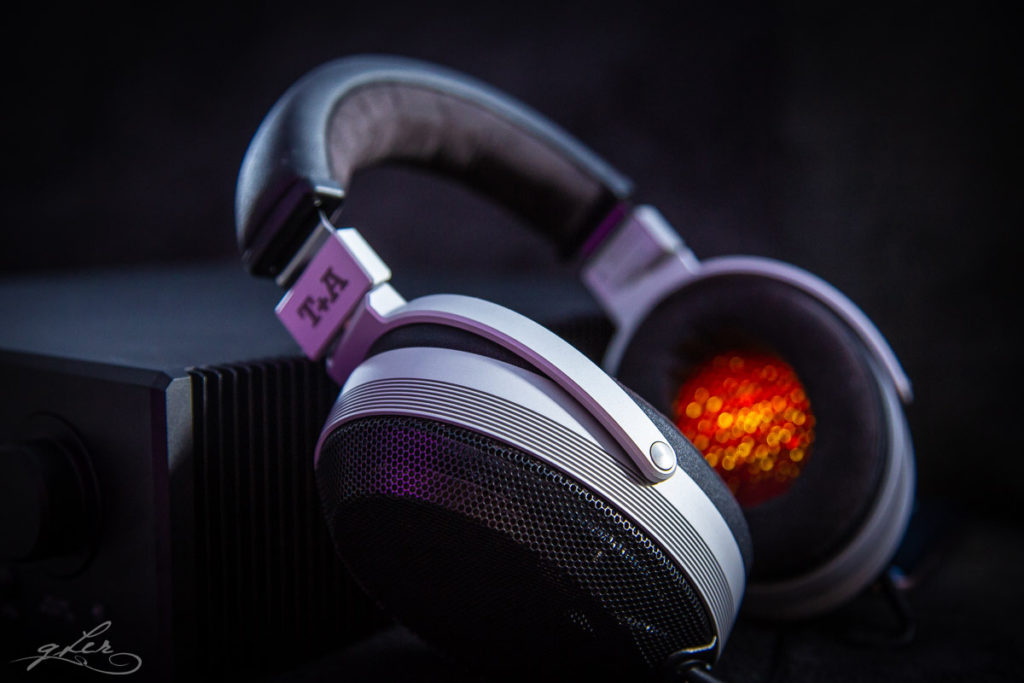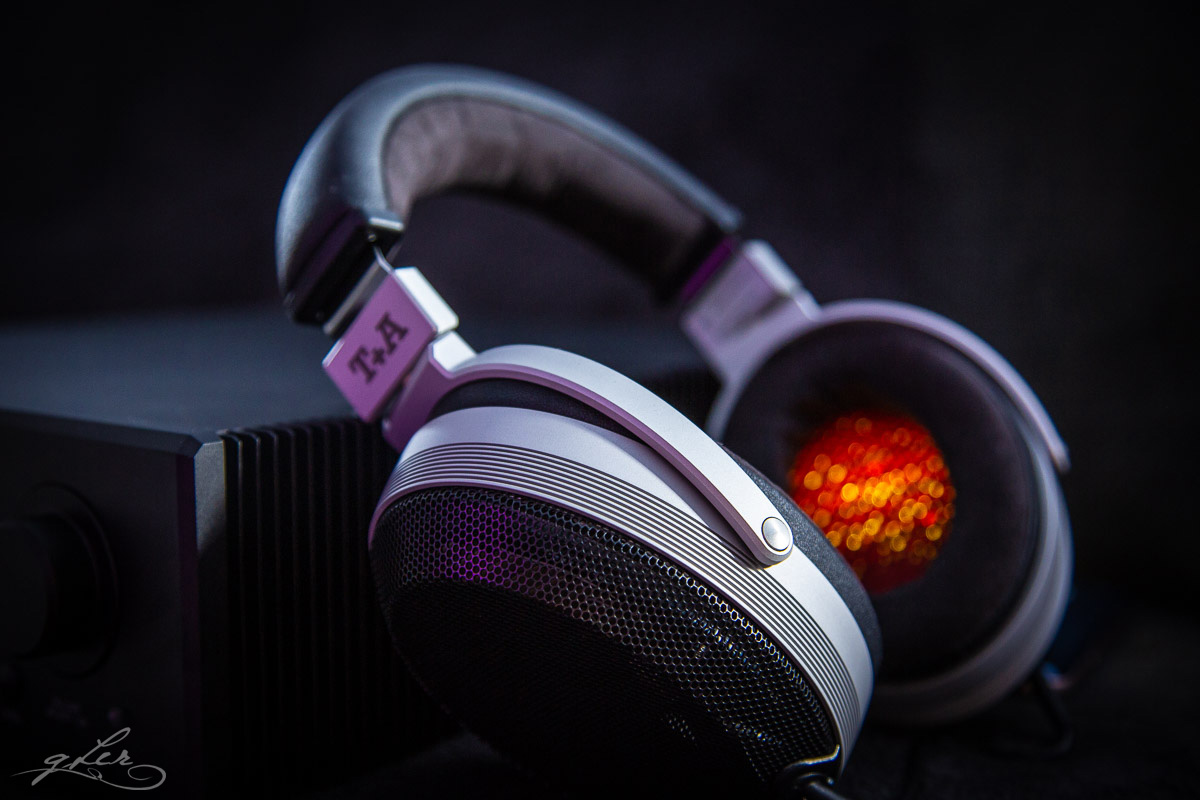Technology Inside
Solitaire P is first and foremost an open-back planar magnostatic headphone. No, not planar magnetic, and yes, there is a difference. The name Solitaire harks back to one of T+A’s early and most famous speaker systems, the Solitaire OEC, which was among the first to advance the science of ultra-thin planar-electrostatic film diaphragms in high-end hi-fi in the early 1980s.
Similar technology was adapted and used for the Solitaire P. The specially-coated µm-thick high-tech polymer diaphragm is driven by 19 precision-placed neodymium magnets of varying lengths spaced out in a very specific array and kept within exacting (hundredths of a millimetre) distances of the diaphragm surface.
The single-sided magnostat array serves two purposes: it keeps the overall weight of the driver mechanism relatively light (compared to dual-sided planar magnetic designs), and ensures a totally linear magnetic field across the entire diaphragm surface. The special photo-chemical process used to distribute the driver coating further eliminates any variation in surface fluctuation, resulting in virtually zero inertia from the driver movement.

In English, this means you’ll experience an utterly precise sound, with extreme extension along the frequency curve and almost no distortion whatsoever, even at the highest volume levels. That’s the theory anyway, though the Solitiare P is officially rated at an unprecedented 0.015% distortion at 100dB.
Unlike several high-end planar magnetic headphones, notably the Hifiman Susvara and Abyss AB1266, but also DCA Stealth and, to a lesser extent, Audeze LCD5, the Solitaire P doesn’t need a hot-rod amplifier to drive it sufficiently, nor does it need a special energiser, as is the case for most electrostatic headphones. In fact, with a nominal impedance rating of 80 ohms and a sensitivity of 101 dB @ 1 kHz/1V, the Solitaire P is refreshingly easy to drive from almost any source, including a phone. Of course it benefits from more powerful sources, but you’ll find it already delivers excellent sound using portable sources.
The combination of precision German engineering with relatively modest drivetrain requirements speaks volumes about T+A’s vision and design philosophy for the Solitaire P. It’s not a headphone that forces you to sit idle, tethered to tube amps or weighty solid-state amplifiers, even though it will be right at home in that environment. Instead, it frees you from the typical restrictions of high-end planar and electrostatic headphones and lets you experience sound on your own terms, wherever you choose to listen. The fact that T+A supplies the Solitaire P’s balanced cable with a 4.4mm Pentaconn connector (4-pin XLR is offered as a free option on order) is another sign of this forward-thinking philosophy, and while T+A isn’t the first company to do so, I suspect the other big hitters will soon follow suit.

Continue to Sound Impressions




4 Responses
Thank you for the great review! Would you mind sharing the settings you have used on the HA200 for your review?
Sure, it was mostly set on 18ohm, using the Fir2 filter.
Thank you. I’m using the BEZ2 filter, seems more natural to me. What about Loudness level you have settled with?
Varies for me, but SolP can go VERY loud without distorting, which is not great for hearing health! It’s also very clear at low listening levels. I generally listen at moderate volume.